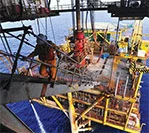PULL your car into a petrol station, hop out of it and pay your friendly cashier. Next, lift the nozzle from the cradle, jam it into the filler neck of the fuel tank and squeeze the handgrip. It is a simple, mindless act we do every day.
We give no further thought to where oil or petroleum comes from, how it is processed and whether the world has enough of it. Despite it being the lifeblood of economies, oil is like love; you don’t have to understand it to get involved with it.
Such indifference has to change. With the cabinet decision to remove energy subsidies, Malaysians must understand the causes and the consequences of crude oil price movements.
The recent oil market is more volatile than the historic price changes in 1973, 1979-1980, and 1986. The switch between high and low oil prices is nothing short of a roller-coaster ride.
Following the financial crisis, oil prices rose above US$140 (RM486) per barrel by mid-2008, fell below US$40 toward the year end, and finally, recovered again to above US$100 per barrel. When prices are high, exporters like Russia, Saudi Arabia and Venezuela reap enormous revenues. The most vulnerable to the upward spiral of oil prices are poor communities.
In a survey by the United Nations Development Programme, households in Asia and the Pacific ended up paying 120 per cent more for transport when crude oil prices soared between 2002 and 2005.
But oil is much more than just a transport fuel. Our food is grown with oil and so is our power generation. Therefore, these households had to pay 33 per cent more for petroleum-based fertilisers and 67 per cent more for electricity. Coping with these increases were not easy for the poor. In Indonesia and India, many rural communities had to cut back on kerosene use for cooking and stay in darkness during power outages.
Because stripping away the subsidy shields often provoke public backlash, governments are torn between social justice and fiscal prudence. Oil price shocks are known to cause inflation, increase budget deficit and worsen balance of payments. What happens when prices drop sharply, as they have for the past five months, diving by almost 40 per cent since June?
Thanks to the combination of shale gas overproduction and a sluggish world economy, crude oil prices hit a five-year low at US$69 per barrel last week. As there are winners and losers, the overall feel good vibe with cheaper oil should be greeted with cautious optimism.
At first glance, a lower pump price is generally good for us as we now have more disposable income by spending less on fuel. By cutting on energy costs, businesses all over may contribute positively to global economic growth. One downside is that fossil fuel consumption may go up, much to the dismay of proponents of alternative energy.
For oil producers, this year is certainly not a good time to be one. Russia, Iran and Venezuela suffered a huge loss of revenue. The current price dip shifts some US$1.3 trillion from producers to
Thanks to combination of shale gas overproduction and a sluggish world economy, crude oil prices hit a five-year low at US$69 per barrel last week.
consumers. This proves a windfall for big importers like China, India and Japan. Other effects may also set in train, for instance, the worsening of the producers’ exchange rate.
Not only that oil producers need to come up with ways to make up the revenue shortfall, imported goods will be more expensive, cutting domestic demand and spending.
While Iran is earning US$1 billion a month less than it was under average prices prior to the plunge, Venezuela is on economic ropes, confronting hyperinflation and battered by the plummeting bolivar currency. The ruble, Russia’s currency, has depreciated by nearly 60 per cent against the dollar this year.
Even a small producer like Malaysia is not spared the misfortune. Our ringgit depreciated sharply against the US dollar, its lowest since 2010. RHB Research estimates that for every US$10 per barrel price slump, government revenues would be reduced by RM4 billion. Hopefully, the lower government expenditure as a result of the subsidy removal will partially cushion the impact on the country.
The chessboard of geopolitics may also change. The decision of the Organisation of the Petroleum Exporting Countries last week not to decrease its oil production may bear the influence of Saudi Arabia’s two-prong geopolitical calculations.
First, members agree to endure the pain of lower prices temporarily to undercut the shale gas revolution in the US, and eventually drive the producers out of the market.
Second, lower oil prices will weaken Iran and Russia, and by extension, their clout in the oil market.
In due time, both prospects would send the price soaring again.
To confront future uncertainties, Malaysia must continue to seek new and promising directions to achieve national energy security, including at the household level.
Article by Dr Hezri Adnan which appeared in New Straits Times, 9 December 2014.





